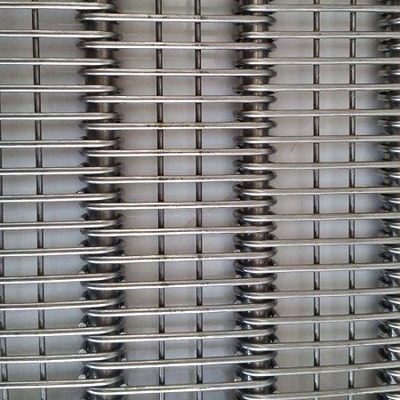Practical Guide to Preventing Sintering Furnace Mesh Belt Misalignment (Snaking)
 Time:2018-04-12
Time:2018-04-12 View:11
View:11 Sintering furnace mesh belt misalignment, or "snaking," not only reduces production efficiency but can also lead to equipment wear and product quality issues. To ensure stable operation, systematic measures should be implemented across installation, maintenance, optimization, and operational procedures.

I. Installation Phase: Lay a Solid Foundation with Precision Alignment
Ensure Installation Accuracy
During installation, ensure that the head and tail drums, intermediate rollers, and other components are strictly aligned on the same centerline and parallel to each other. Precision installation is fundamental to preventing belt misalignment.Adjust Rollers and Drums
Regularly check the alignment between the transverse centerline of the rollers and the longitudinal centerline of the conveyor. If the deviation exceeds 3mm, adjust it using the elongated mounting holes on both sides of the roller set. For drums that are misaligned or unevenly worn, adjust or replace them promptly.Standardize Mesh Belt Joints
Mesh belt joints must be straight and accurate, ensuring both sides have identical perimeter lengths so the entire belt forms a perfect rectangle. Incorrect or bent joints can cause uneven force distribution, leading to misalignment.
【Special Note】During installation and commissioning, gradually increase the temperature while adjusting the belt, and periodically trim the mesh to maintain an optimal belt length.
II. Daily Maintenance: Regular Checks and Timely Actions
Ensure Uniform Material Distribution
Material should be evenly distributed on the mesh belt to avoid overloading one side. If uneven loading occurs, install baffles at the feed inlet to guide material placement.Regular Cleaning
Promptly remove debris from the mesh belt and adhered material from the surfaces of drums and rollers. Buildup can cause localized diameter changes, disrupting tension balance and leading to misalignment.Control Belt Tension
Regularly inspect and adjust the mesh belt tension to ensure it is within the appropriate range. Uneven tension is a common cause of instability and snaking.
III. Equipment Optimization: Proactive Prevention and Performance Enhancement
Install Correction Devices
Equip the system with differential self-aligning roller sets or passive hydraulic linkage correction devices to enable automatic detection and adjustment of misalignment.Optimize Mesh Belt Design
Select suitable mesh belt materials and structural parameters (such as wire diameter and pitch) based on actual working conditions to enhance deformation resistance and operational stability under high temperatures and heavy loads.
IV. Operational Standards: Improve Systems and Strengthen Implementation
Strict Personnel Training
Ensure operators are thoroughly familiar with equipment specifications to prevent operational errors that could cause issues.Establish Inspection Routines
Develop and implement regular inspection and maintenance schedules to detect and resolve problems early.
By implementing these systematic measures, the risk of sintering furnace mesh belt misalignment can be significantly reduced, ensuring continuous production and consistent product quality.
Yoliwong Metal Belt – With a century of technical expertise, we specialize in the R&D and customization of metal belts for all industrial applications. Delivering to support efficient and stable production operations for our customers worldwide.

 Previous:
Previous: Products List
Products List
 Categories
Categories Knowledge
Knowledge